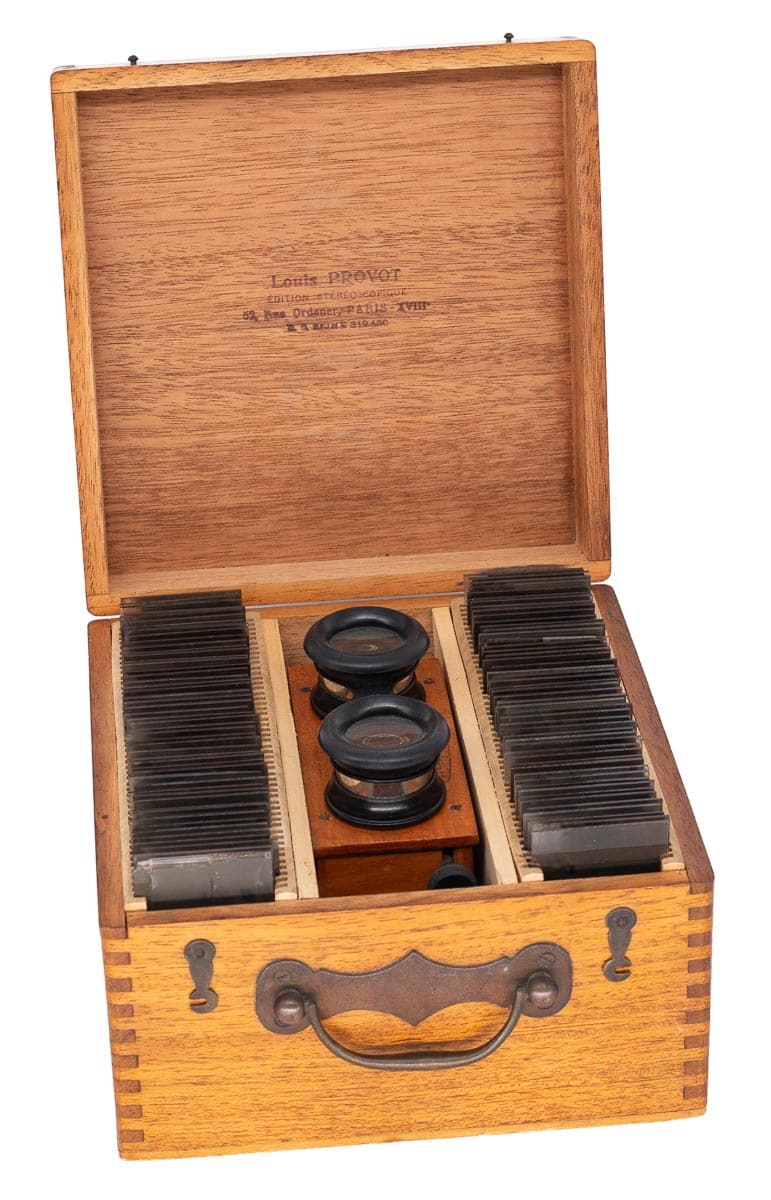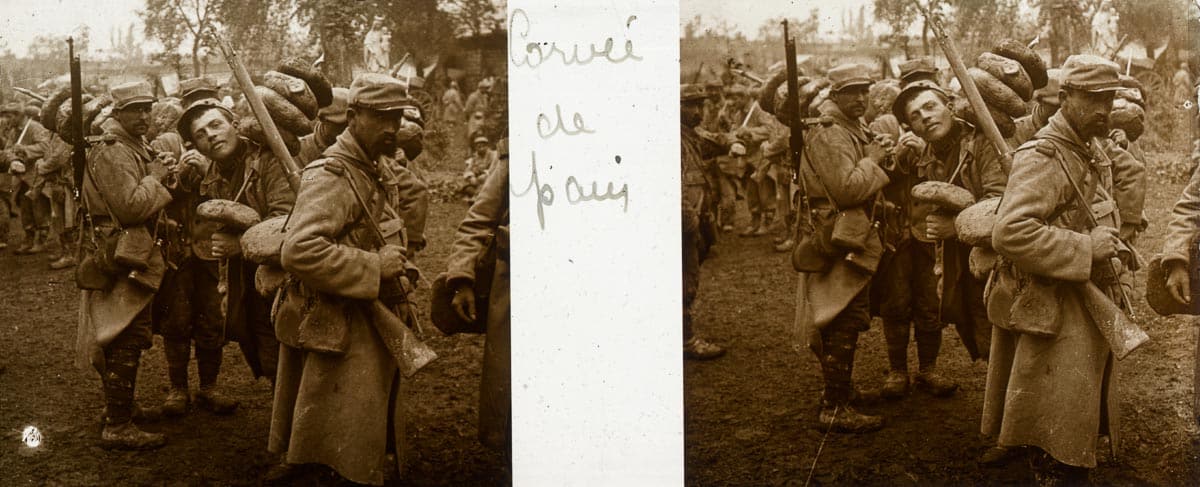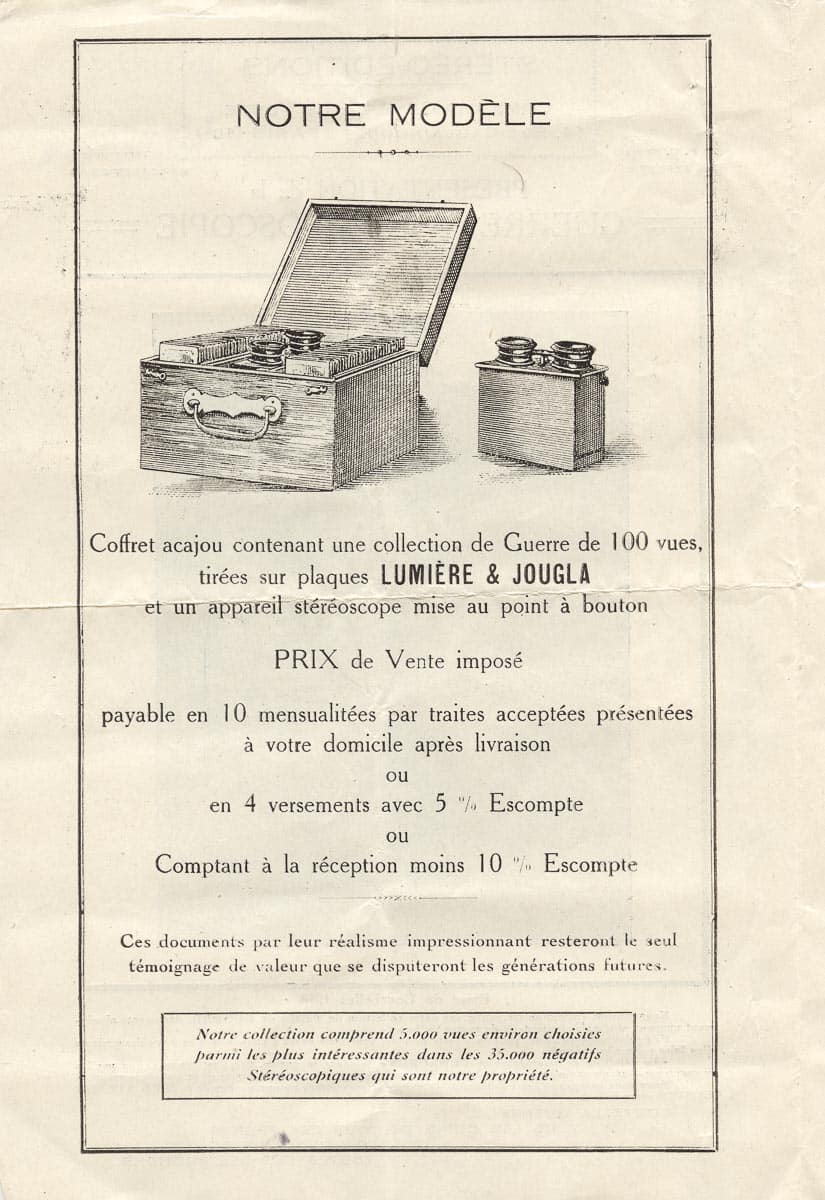
A wooden case with 100 glass stereoviews in the 45 x 107 mm format with scenes from the First World War. The case includes a Unis France stereoscope that was manufactured by Mattey. On the inside of the lid is a retailer’s stamp visible: Louis Provot Édition Stéréoscopique. Louis Provot was located at 52, Rue Ordener in Paris and sold cases of with 50, 100 or 200 stereoviews. The collection contains a fairly representative overview of the war. With these cases, sellers such as Provot targeted curious customers who wanted to get an impression of the war. The included stereoscope ensured that the buyer could immediately view his collection. The stereoviews in the case are categorised as Brentano’s.

Stereoviews were already being sold during the war, but the supply was limited, and censorship allowed the population to see only what the French Ministry of War approved. After censorship ended, the range of photos was expanded with photos that the soldiers took from the front line. The soldiers sold (copies of) their negatives or the image publishing rights to commercial publishers. The real horrors of the war became visible, and the depth effect of stereo photography enhanced the experience.

The stereoviews became very popular. The views were offered on paper and glass, but in the French tradition, it were the glass slides in the formats 45 x 107 mm and 6 x 13 cm that were the most popular. In addition to the large wooden cases, the slides were also sold in series of 10 or 12 and were packed in cardboard boxes. Each series had a theme related to a specific battle or campaign. It was also possible to buy the slides individually, based on titles in a catalogue. There were catalogues with overviews of all battles and their locations, allowing the buyers to see where their photos were taken.
Retailer G. Ferret of Éditions Stéréoscopiques wrote in his catalogue:
As painful as the war period has been, you owe it to yourself and your descendants to keep the memory alive. These images, due to their impressive realism, will remain the only testimony of value for future generations.
